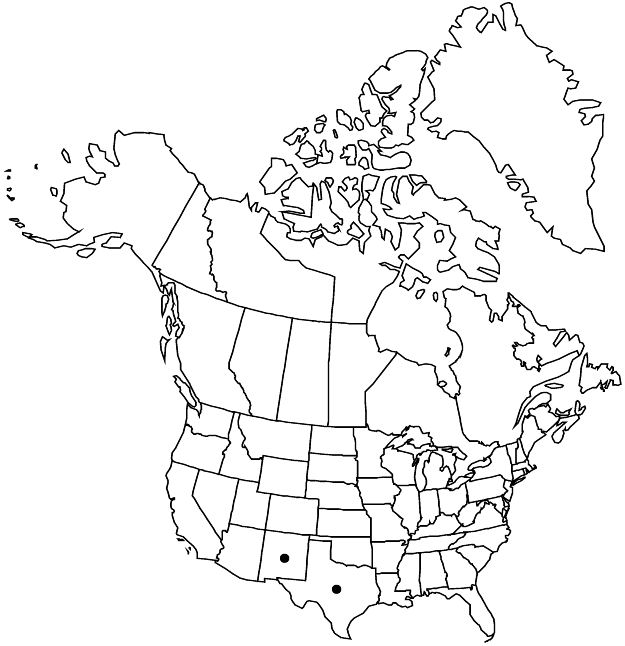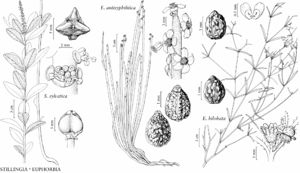Euphorbia antisyphilitica
Flora 15(2, Beibl.): 58. 1832.
Shrubs, with much-branched, fleshy rootstock. Stems erect, few branched, 25–50(–100) cm, glabrous or puberulent, pencil-like, in age covered with flaky, exfoliating layer of wax. Leaves alternate usually caducous, sometimes persisting; stipules 0.4–0.5 mm; petiole absent; blade ovate to deltate-subulate, 2.5–4 × 1 mm, thick, fleshy, base usually rounded and swollen, rarely cuneate, margins entire, apex acute, surfaces puberulent, adaxial sometimes canescent; venation inconspicuous. Cyathia in axillary congested cymes, near branch tips or solitary at distal nodes; peduncle 0–1 mm, lanulose. Involucre campanulate, 1.6–2.2 × 1.6–1.9 mm, puberulent to canescent; glands 5, pinkish, narrowly oblong to reniform, 0.3–0.4 × 0.8–1 mm; appendages white to pink, ovate, oblong, or transversely oblong, 1.3–2.5 × 1.4–2.5 mm, usually erose, rarely entire. Staminate flowers 50–70. Pistillate flowers: ovary glabrous; styles 0.9–1.1 mm, 2-fid nearly entire length. Capsules oblong to ovoid, 3.9–4.2 × 3.6–3.9 mm, glabrous; columella 3.1–3.3 mm. Seeds whitish gray, narrowly ovoid, 2.4–3.1 × 1.4–1.6 mm, irregularly rugose-tuberculate; caruncle crescent-shaped, 0.3–0.6 × 0.6–0.8 mm.
Phenology: Flowering and fruiting year-round in response to sufficient rainfall.
Habitat: Desert scrub, frequently on limestone substrates.
Elevation: 100–1200 m.
Distribution

N.Mex., Tex., Mexico.
Discussion
Euphorbia antisyphilitica is the only pencil-stemmed species of Euphorbia occurring in the flora area. The species is characteristic of the Chihuahuan Desert scrub of Mexico from Chihuahua and Coahuila south to Hidalgo and Querétaro, and barely enters into the United States in southern New Mexico (Doña Ana and Lincoln counties) and southwest (Brewster, Hudspeth, Presidio, and Terrell counties) and south (Starr and Webb counties) Texas. The stems are covered in a conspicuous coat of exfoliating wax, and the plants historically have been harvested for this product, although the practice is much less prevalent now. The specific epithet refers to its traditional medicinal use in treating sexually transmitted infections.
Selected References
None.
